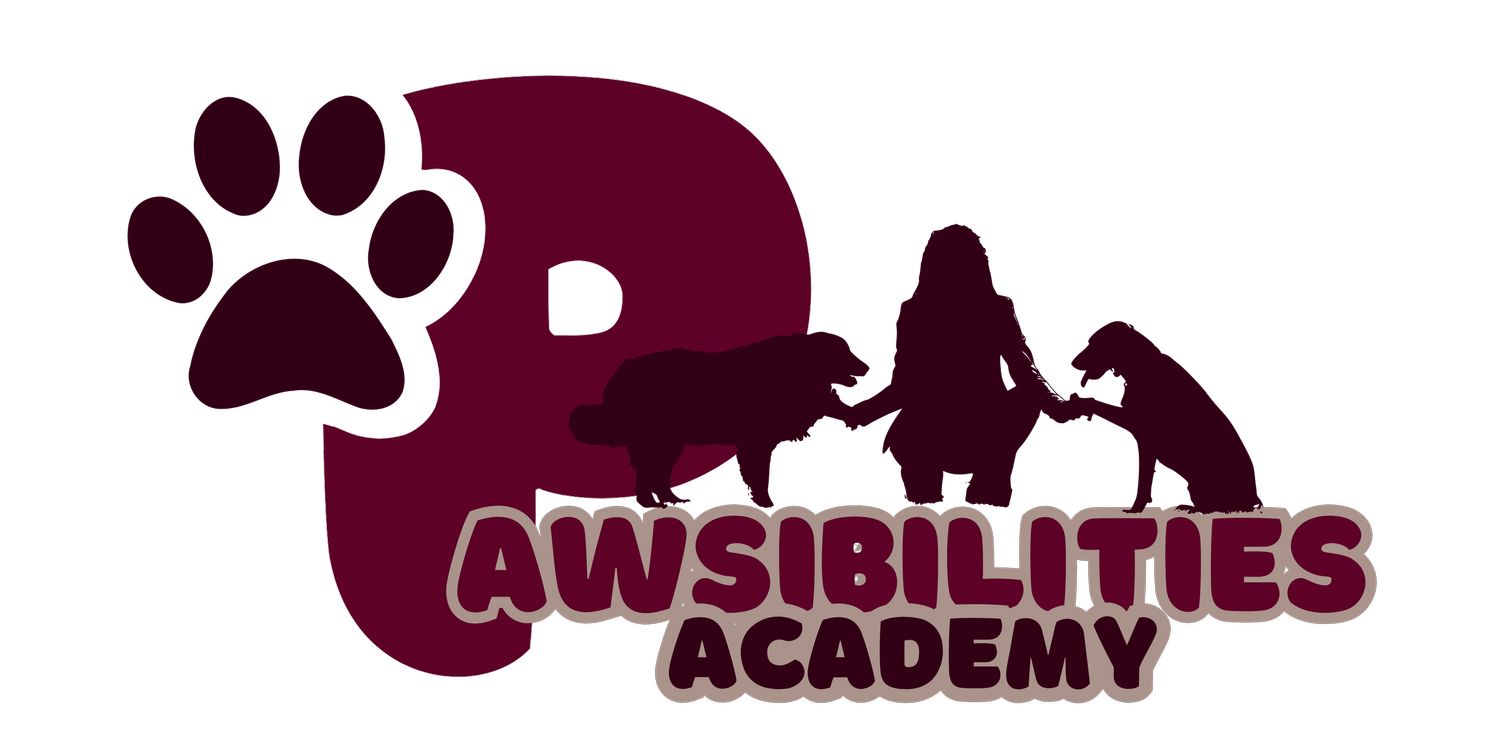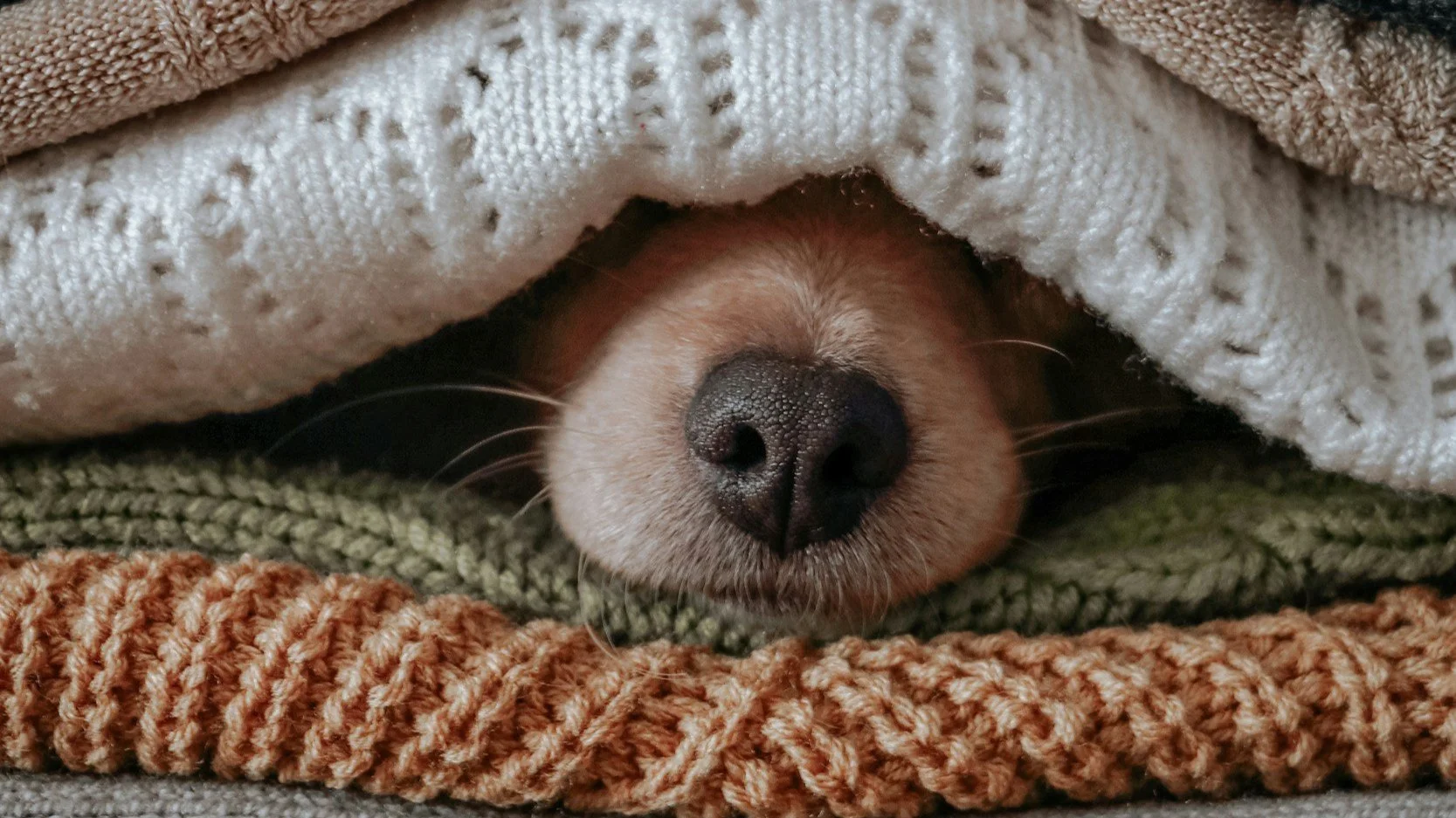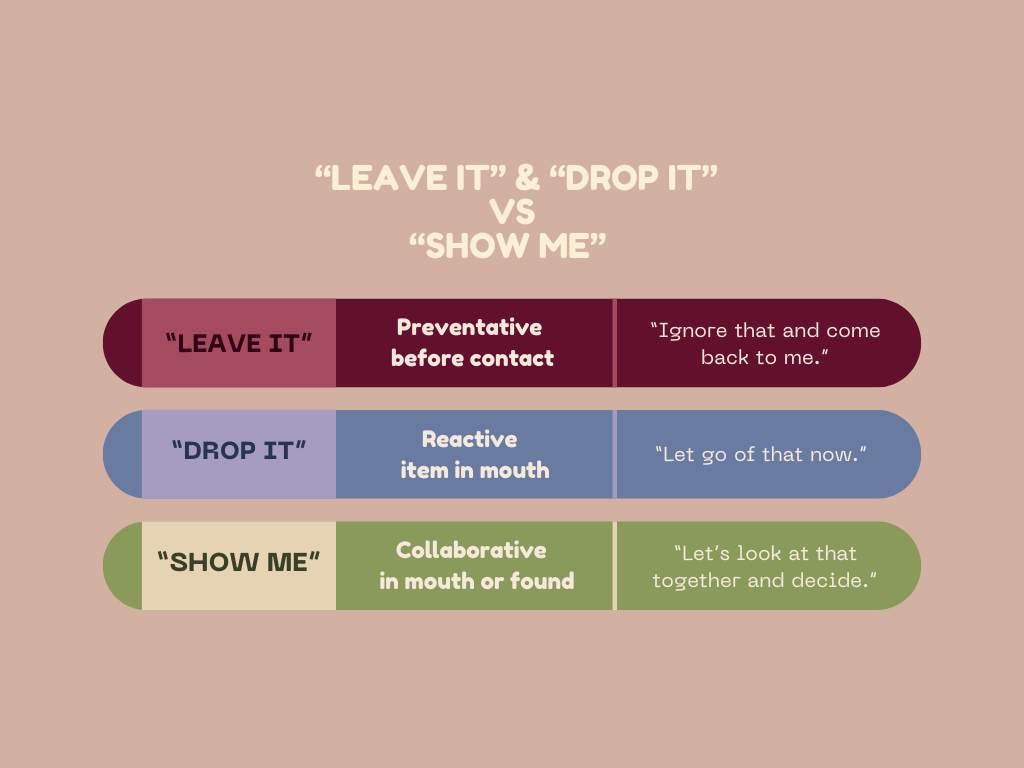Sudden Dog Misbehaviour? Why It Might Be Communication, Not Disobedience
It Was Going So Well… Until It Wasn’t
You’ve put in the work.
You trained with care.
Your bond was strong.
Then suddenly…
Your dog barks at every sound.
They refuse to eat unless you're next to them.
They chew the doorframe when you leave.
They growl when you try to touch their paw.
You wonder:
“Why is my dog misbehaving out of nowhere?”
But what if this isn’t misbehaviour at all?
What if it’s communication?
🔎 Quick Look: Common Sudden Behaviour Changes in Dogs
If any of these sound familiar, you’re not alone—and your dog might be trying to tell you something important:
Barking at familiar sounds
Ignoring known cues
Chewing furniture, shoes, or doorframes
Toileting indoors after being fully house-trained
Growling during rest or handling
Pulling on the lead after walking well
Clinginess or following you constantly
Barking or howling when left alone
🧠 Behaviour Is a Clue, Not a Crime
Dogs rarely act out just because. Most so-called “naughty” behaviours are actually emotional signals—pleas for help, expressions of fear, or reactions to stress.
As the IAABC (International Association of Animal Behavior Consultants) reminds us:
“All behaviour serves a function. What we label ‘bad’ is often a normal response to unmet needs.”
Let’s explore what your dog might be trying to tell you—and how you can help them feel safe again.
Why Do Dogs Suddenly Start Acting Differently?
Sudden behaviour changes are usually a response to something—internally or externally. Here are some of the most common causes:
Pain or health issues
Emotional overwhelm or fear periods
Changes in environment, routine, or household dynamics
Boredom or lack of mental stimulation
Loss of confidence or predictability
Understanding the “why” helps you support your dog with empathy—not frustration.
1. Barking at Sounds They Used to Ignore
We think: “They’re being dramatic.”
They might be saying:
“I’m overwhelmed. That startled me—I need to feel safe.”
🧩 Why it happens: Dogs go through fear periods, pain flare-ups, or sensory overload just like us.
✅ What helps: Gentle reassurance, white noise, safe spaces, calming routines.
2. Chewing Furniture or Shoes ‘Out of the Blue’
We think: “They’re punishing me for leaving.”
They might be saying:
“I was anxious and needed to self-soothe.”
🧩 Why it happens: Separation-related stress, changes to the daily routine, or loneliness.
✅ What helps: Chew-safe toys, enrichment games, gradual alone-time training.
3. Ignoring Cues They Used to Know
We think: “They’re being stubborn.”
They might be saying:
“I’m too distracted or stressed to focus.”
🧩 Why it happens: Adolescence, emotional dysregulation, fear, or demotivation.
✅ What helps: Revisit cues playfully, reduce distractions, and train in low-pressure environments.
4. Growling While Resting or Eating
We think: “They’re becoming aggressive.”
They might be saying:
“I don’t feel safe. Please respect my space.”
🧩 Why it happens: Growling is a warning signal—an honest expression of discomfort.
✅ What helps: Respect rest spaces, teach consent-based handling, build trust through positive associations.
5. Pulling on the Lead After Previously Walking Well
We think: “They’re ignoring me on purpose.”
They might be saying:
“Something feels unsafe—or something is pulling me in.”
🧩 Why it happens: Anxiety, over-arousal, or loss of focus in stimulating environments.
✅ What helps: Decompression walks, reinforcing connection before correction, choice-led walking.
6. Toileting Indoors After Being Fully Housetrained
We think: “They’re being lazy or spiteful.”
They might be saying:
“I’m confused, anxious, or something feels off in my body.”
🧩 Why it happens: Medical issues, weather changes, sensory decline, stress.
✅ What helps: Rule out health concerns, revisit toilet routines gently, maintain consistency.
7. Barking or Howling When You Leave
We think: “They’re spoiled or overly attached.”
They might be saying:
“I don’t know how to feel safe without you.”
🧩 Why it happens: Separation distress is an emotional challenge, not a behaviour flaw.
✅ What helps: Solo-enrichment, calm exits and returns, gradual desensitisation, and support.
8. Clinginess or Following You Constantly
We think: “They’ve become needy.”
They might be saying:
“I don’t feel confident in the world right now. You are my safe person.”
🧩 Why it happens: Stress, new environments, cognitive changes, or post-stress recovery.
✅ What helps: Calming enrichment, predictable routines, slow independence-building.
The Shift: From Control to Curiosity
When we label behaviour as “bad,” we shut down empathy.
When we get curious, we open the door to true understanding.
A growl is not betrayal—it’s communication.
Pulling is not rebellion—it’s a need.
Barking is not defiance—it’s expression.
Your dog isn’t trying to dominate you, embarrass you, or punish you.
They’re trying to be heard.
What To Do Next
Notice the change—don’t just react to it.
Ask what might have shifted—emotionally, physically, or environmentally.
Support first, train second.
Reach out for help—especially if you’re unsure. Force-free support can change everything.
💬 Ready to Understand Your Dog, Not Just "Fix" Them?
I offer online consultations designed to decode sudden changes in behaviour—so you can work with your dog, not against them.
Together, let’s build a relationship based on trust, empathy, and understanding.
Your dog deserves to be heard—and you deserve to feel confident again.
Snatch, Guard, Repeat? How ‘Show Me’ Interrupts the Cycle with Trust
🐾 Why your dog’s scavenging isn’t about being naughty—and how you can guide them with connection, not correction.
The Snatch-and-Guard Spiral
You’re walking your dog and suddenly—snap!—they’ve grabbed something off the pavement. At home, it might be a sock, a sponge, or a scrap of paper. You move toward them, and they freeze, run off, gulp it down, or growl. It’s easy to feel frustrated or worried. But what’s really going on?
Dogs are natural opportunists. When they find something interesting—edible or not—their instinct kicks in: “This might be valuable. I’d better grab it.” That split-second decision isn’t about being disobedient. It’s about impulse, curiosity, or even comfort. Sometimes, that snatched sock just smells like home.
The trouble starts when they don’t know what to do next. Many dogs become overwhelmed once the item is in their possession. Should they eat it? Hide it? Play with it? Their uncertainty often leads to panic or protection. If past experiences taught them that humans always take things away, they may start guarding what they’ve found—holding it tightly, freezing, growling, or swallowing it quickly before anyone can interfere.
Over time, this creates a spiral: snatch → hide → guard → gulp. The more it happens, the more automatic—and emotional—it becomes. What begins as curiosity can easily turn into anxiety.
But it doesn’t have to. When we meet these moments with calm curiosity and give our dogs a role to play—like guiding us to the object or showing us what they’ve found—we interrupt the spiral. We shift from control to connection. And that’s where lasting change begins.
What Is Opportunistic Scavenging?
At its core, scavenging is your dog’s natural instinct to collect or consume things of value. It goes far beyond food:
A sock with your scent
A crunchy leaf or sweet wrapper
A dropped apple or pizza crust on a walk
A used tissue or a bottle cap
A shiny object that simply looks ‘important’
To us, it might seem random or gross. To your dog, it’s a jackpot. And because dogs don’t always know what to do with their found treasures, they often become overwhelmed: do I eat it? Hide it? Hold onto it in case I lose it?
And when they’ve been scolded or had items snatched away in the past, they quickly learn:
“If I let go, I lose everything.”
When Scavenging Turns Into Guarding
Guarding begins when your dog feels the need to protect what they’ve found—either because they don’t know what’s safe, or because they fear loss.
You might see:
Freezing or hiding with the item
Growling when approached
Swallowing items quickly before you can get to them
Avoidance or frantic behaviour when they don’t know what to do with their find
This is especially true when dogs are met with confrontation or punishment for scavenging. Even well-meaning humans can unintentionally teach dogs that humans = danger when they have something valuable.
The body doesn’t lie—watching for subtle signals like stiff posture, hovering, or a slow freeze can help you step in early before guarding escalates.
Reframing the Behaviour
Rather than seeing scavenging as “naughty,” we can reframe it as an opportunity for communication and trust-building. Your dog isn’t being disobedient—they’re engaging with the world. The real question is:
Can you turn that moment into teamwork instead of a tug-of-war?
The “Show Me” Cue
“Show Me” is a gentle, trust-based cue that invites your dog to either:
Guide you to something they’ve found, or
Offer up what’s already in their mouth so you can inspect it together.
This simple phrase carries a powerful message:
“I trust you. Let’s figure this out together.”
Cues like “Show Me” can help reduce the need to guard by giving dogs a safe way to communicate what they’ve found. When dogs feel they won’t be rushed, punished, or lose everything they value, they’re far less likely to resort to guarding in the first place.
Why “Show Me” Is a Game-Changer
No confrontation: Instead of grabbing, shouting, or chasing, you invite.
Builds trust: Dogs learn that giving you access to their treasure doesn’t mean instant loss—it could lead to rewards, praise, or even getting it back.
Encourages communication: Dogs learn to pause, wait, and involve you in their decision-making.
Promotes safety: You gain a precious moment to assess if what they found is safe to keep.
Prevents guarding: When a dog feels heard and respected, they have less need to protect.
Teaching “Show Me”: Two Different Training Paths
🎯 Part 1: Leading You to a Treasure
Goal: The dog finds something and instead of snatching it or ignoring you, they choose to lead you to it.
🐾 Step-by-Step
Stage 1 – Build the behaviour (no cue yet)
Scatter a few safe, low-value items. Let your dog explore.
When they naturally approach or sniff one, calmly walk with them.
As they pause at the item, mark (“Yes!”) and reward near it.
Repeat until they begin to expect your interest in their finds.
Increase your distance and let them guide you from across the room or garden.
Stage 2 – Add the cue “Show Me”
Once your dog consistently guides you, begin saying “Show Me?” as they start moving toward the item.
Mark and reward when they bring you along or wait beside it.
Reinforce this in real-life moments on walks or around the house.
🎯 Part 2: Letting Go of a Treasure
Goal: Your dog willingly lets you inspect or take what’s already in their mouth—without fear or stress.
🐾 Step-by-Step
Stage 1 – Build the behaviour (no cue yet)
Start with safe, medium-value items your dog is happy to hold.
Approach calmly and place your hand beside the object—don’t grab.
If they loosen grip or offer the item, mark and reward.
Trade with high-value treats, toys, or give the item back.
Repeat until your dog sees your approach as a positive moment.
Stage 2 – Add the cue “Show Me”
Begin to softly say “Show Me?” as you approach or offer the trade.
Mark and reward when your dog lets go or brings the item forward.
Occasionally inspect and return the item, so the cue doesn’t always mean giving something up.
“Show Me” vs “Leave It” and “Drop It”
💬 The difference is emotional:
“Show Me” is based on curiosity and collaboration, not control. It invites your dog to share, not surrender.
Final Thoughts
When we meet opportunistic scavenging with panic or punishment, we teach our dogs that they’re alone in those moments.
But when we meet it with trust, curiosity, and a cue like “Show Me”, we send a different message:
“You don’t have to figure this out alone. I’m here with you.”
Need Support?
If your dog struggles with scavenging, guarding, or panic-dropping, I’d love to help. Whether you’re in Edinburgh or prefer online coaching, I offer bespoke, compassionate training rooted in science and trust.









